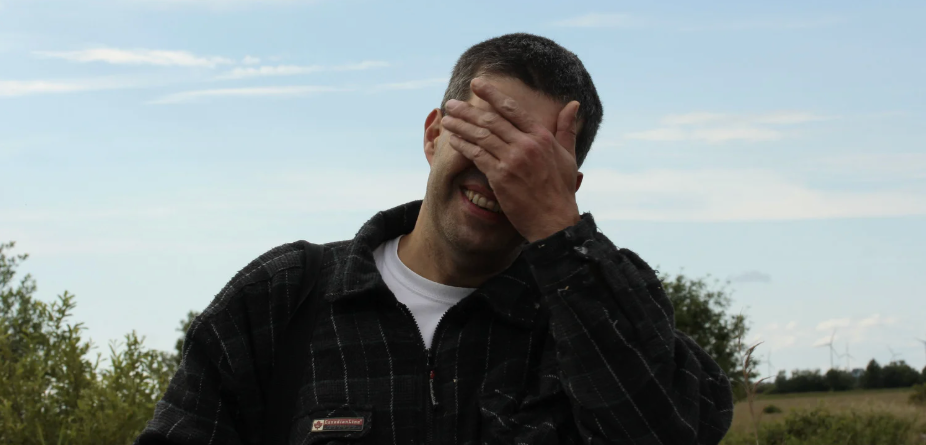10 car seat safety tips from an expert. Some of these might surprise the most seasoned parent.
Did you know that car accidents are a leading cause of preventable death for children between the ages of 1 and 13? That's a fact.
But we can keep our kids safer by installing and correctly using car and booster seats. And before you roll your eyes and say, “Yeah yeah. Been there, done that," you need to hear what pediatrician Dr. Alisa Baer, also known as The Car Seat Lady, has to say:
“Studies show that even for parents who are on their fourth kid, car seat installation is one of the few things that people tend not to get better at."
This can truly be a matter of life and death, so buckle up — metaphorically, of course — and take a few minutes to read about these ten extremely important tips from Baer.
1. Keep the car seat straps snug.
Image by NHTSA.
“Most kids are riding around with straps that are too loose," Baer says. Properly secured snug straps, despite protests from some kids, don't cause pain. “If you're going to jump out of an airplane with a parachute, you're not going to think, 'Oh, it's snug! Let me loosen it!'" she explains.
Think of the car seat straps the same way. If you need guidance on how to ensure the straps are snug, check out this video. Also be sure to remove any bulky clothing. Things like winter coats usually make it necessary to loosen straps — which in turn makes them far less effective.
2. Keep kids rear-facing for as long as possible.
Image by NHTSA.
Once your child outgrows an infant car seat — which is always rear-facing — they'll move into a convertible car seat. Those can be used either in a rear- or forward-facing position. But “can" and “should" are two different things. Baer says you should always keep your child rear-facing until age 2 — and ideally longer, until they reach the rear-facing limits of the car seat. That shouldn't happen until your kiddo is at least 2 years old, but even then, if they're below the maximums for the car seat, don't flip them around!
A common misconception among parents is that there's a greater risk for leg injuries in the event of a crash in rear-facing car seats because it appears as though a child's legs are scrunched up. Baer assured me that kids are actually at a greater risk for leg injuries when they're forward-facing because in an accident, their feet make contact with the seat in front of them, which is simultaneously moving backward. The result is a compression injury, something that doesn't happen when the child is rear-facing.
“The leg injuries we see when a child is rear-facing are usually due to a direct impact from the intruding vehicle. At that point, it doesn't matter which way your child is facing," says Baer.
3. When your child becomes too big to rear-face, keep them as safe as possible when forward-facing.
Image by NHTSA.
“The goal now that we've turned your child forward, which makes their brain and spine less safe than when they were rear-facing," says Baer, “is to keep them as safe as we can." You can accomplish that by using the tether strap that comes on every single forward-facing car seat sold in the U.S. The tether secures to a top tether anchor point in your vehicle. This is where you'll need to break out that vehicle owner's manual to find where they're located. Since 2000, all vehicles sold in the U.S. are required to have anchors where you can secure the tethers in at least three seating positions. Got a minivan or SUV? Most of these vehicles do NOT have tether anchors in all the rear seats. Find the tether anchors and always use them for forward-facing car seats.
“Forward-facing protection is greatly enhanced by the tether," Baer explains. “It decreases how far the child's head moves in a crash by at least four to six inches. When you factor in that most seats are too loose, that can mean a difference of 12 inches or more." Because you only want your child's head to hit air in a crash and not the seat in front of them, the tethers on forward-facing car seats are vital.
Image by NHTSA.
LATCH can be confusing. It stands for Lower Anchors and Tethers for Children. LATCH is comprised of both parts on the car seat and parts in the vehicle, Baer explains. The government requires all vehicles model year 2003 and newer in the U.S. to have at least two seating positions with lower anchors and at least three positions with tether anchors. The lower anchors are meant to replace the use of the vehicle's seat belt. Most car seats (not booster seats, but actual car seats that have a five-point harness system) can be secured to the lower anchors in vehicles by using the LATCH belt on the child's car seat.
Illustration by The Car Seat Lady, used with permission.
Baer emphasized that no matter how you install the forward-facing car seat — whether with a seat belt or the lower anchors — you should always use the tether. “If you're forward-facing seat is installed with the seat belt, use the tether in addition to the seat belt," she said. “If your forward-facing seat is installed with lower anchors, use the tether in addition to the lower anchors."
So, one more time, because it's that important: Always use the tether on every forward-facing car seat!
4. Don't start using a booster seat too soon — and don't stop using a booster seat too soon.
Image by NHTSA.
For a child to safely use a booster seat, they must be at least 4 years old, weigh 40 pounds, and be mature enough to sit properly in the booster — “no slouching, no leaning over, and no playing with the seat belt." Because of that, Baer says that most kids are generally around 6 years old before they're ready for a booster seat.
When it comes to letting kids dump their booster seats, Baer notes that many parents are doing it too soon. “The goal of a booster is to keep the belt property positioned on a child's body, specifically so the lap belt stays in position on the child's lower hips during a crash."
Baer says that there's a pattern of injuries resulting from children being in accidents while not in booster seats that, while not always fatal, are life altering — things like lower spinal cord injuries resulting in paralysis and bladder and bowel injuries.
The way to prevent those? Keep your kiddo in a booster until the seat belt fits exactly the same without the booster as it does with it. (Check out the five-step test for guidance.) Most kids are 10 to 12 years old before they can ride safely without a booster.
5. Make sure everyone in the car is buckled up.
Besides keeping all of your adult passengers alive, ensuring everyone in the vehicle is wearing a seat belt means they can't become human torpedoes in the event of an accident. “Studies show that if an adult rides in the back without a buckle, the other people in the car are up to three times more likely to die in the same crash because the unbuckled adult is now a human missile," says Baer.
That sounds rather gruesome — and that's because it is. If a car seat is covering a seat belt buckle, for example, reinstall the car seat so that the buckle is available for the adult. It's about everyone's safety.
6. After you install your child's car seat, have it checked by a trained technician.
Image by NHTSA.
While many people think they can swing by a fire or police department to accomplish this, “not even 50% of them have someone trained" to do that, Baer says.
Instead, go to seatcheck.org, where you can enter your zip code to find a trained technician near you.
7. Remember that the center seat is generally the safest spot in the car for kids.
Image by NHTSA.
Children in the center seat won't take a direct hit in an accident, and there's less to hit their head on when they're in a forward-facing car seat. If you have more than one child, remember that your oldest is typically the least protected. “A newborn, for example, is more protected because they're rear-facing," Baer explains. The middle seat often doesn't have the lower anchors, which means you'll need to use the seat belt to secure the car seat (or if your child is in a booster, they'll be using the belt anyway). And remember: If your kiddo is in a forward-facing car seat, use the tether!
8. Don't text or talk on the phone while driving.
“We're not going to make a dent in fatalities until we decrease distracted driving," Baer notes. “We have an obligation to make sure not only our children, but everyone else's children are safe on the road."
9. Car seats expire!
It's not that the car seat industry is out to get your hard-earned cash, Baer says, but rather that "car seats are made of plastic, and plastic is a material that gets brittle with age. You need a seat to be strong enough to withstand an crash." Different car seats have different expiration dates, although they typically last six to eight years. Be sure you know when yours needs replacing — particularly if you're using it with more than one child.
Speaking of which, be sure to put a lot of thought into borrowed or hand-me-down car seats. You should never buy a used car seat online. If you're going to share with friends or use it for more than one child, infant seats that are in good condition are better candidates for sharing than convertible car seats or boosters, which are used for longer and generally experience more wear and tear.
10. If you've been in an accident, there's a good chance that your car seat needs replacing.
Image by iStock.
This holds true regardless of whether your child was in the car seat when the accident occurred because even an empty seat still absorbs some of the force of the crash. Baer says most manufacturers advise that the car seat requires replacement no matter the severity of the crash, but some seats have a “minor crash protocol." You can check her website to learn more.
The top three most common mistakes Baer sees are car seats that are too loose in the car, kids that are too loose in the car seats, and children who are graduated too soon (from rear-facing to forward facing or car seat to booster, for example). With some effort and care, we can all avoid those mistakes and more. It's a lot of info to absorb, but we're talking about our kids' lives.




 Newborn's first cry marks a fresh beginning.
Newborn's first cry marks a fresh beginning. Newborn baby.
Newborn baby.


 Woman in denim jacket covers face with sleeve, standing outdoors with blurred background.
Woman in denim jacket covers face with sleeve, standing outdoors with blurred background. Woman with outstretched arms in a sunlit field, enjoying the outdoors.
Woman with outstretched arms in a sunlit field, enjoying the outdoors. Lush forest with vibrant green and orange foliage in soft, misty sunlight.
Lush forest with vibrant green and orange foliage in soft, misty sunlight. Friends laughing and drinking coffee at a cozy cafe table.
Friends laughing and drinking coffee at a cozy cafe table. Woman with curly hair in sunlight, eyes closed, wearing a purple top.
Woman with curly hair in sunlight, eyes closed, wearing a purple top. Man smiling with hand over face, standing outdoors against a blue sky background.
Man smiling with hand over face, standing outdoors against a blue sky background. Hand painting a still life on canvas with blue and orange tones.
Hand painting a still life on canvas with blue and orange tones. Woman sitting on a chair in the water, writing in a notebook at sunset.
Woman sitting on a chair in the water, writing in a notebook at sunset.
 Women walking down a street.Image via Canva Photos.
Women walking down a street.Image via Canva Photos.  Woman aware of her surroundings in a parking garage. Image via Canva Photos.
Woman aware of her surroundings in a parking garage. Image via Canva Photos.
 "You're hilariously brilliant at everything you hate."
"You're hilariously brilliant at everything you hate."  "Bridget is authentically herself…and triumphs in her own way."
"Bridget is authentically herself…and triumphs in her own way."  "They're written in some curious language that I can't really understand."
"They're written in some curious language that I can't really understand."